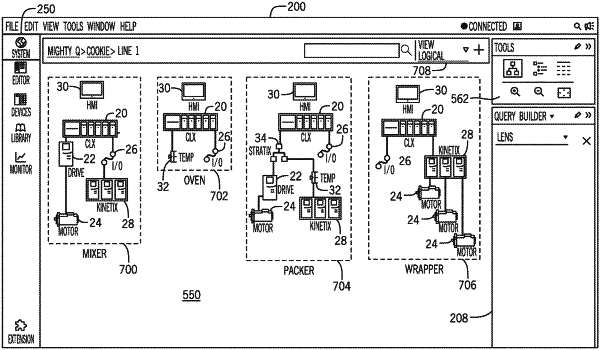| CPC G06F 8/75 (2013.01) [G06N 20/00 (2019.01); G06N 5/04 (2013.01)] | 19 Claims |

|
1. A non-transitory, tangible, computer-readable medium comprising instructions that, when executed by a processor, causes the processor to perform operations comprising:
receiving first portion of code, wherein the first portion of code is associated with one or more operations of an industrial automation system during performance of an industrial automation process, wherein the first portion of code is a part of a first project code file that defines the one or more operations of a plurality of industrial automation devices within the industrial automation system;
retrieving a set of rules defining guidelines for a plurality of portions of code, including the first portion of code;
performing a first analysis of the first portion of code based on the set of rules;
determining whether the first portion of code meets an acceptance criteria based on the first analysis;
generating a first visualization based on the first analysis;
adding data generated during the first analysis to a historical dataset;
training a machine learning algorithm based on the historical dataset, including the data generated during the first analysis;
updating the set of rules via the trained machine learning algorithm;
receiving a second portion of code that is a part of a second project code file;
performing a second analysis of the second portion of code based on the updated set of rules;
determining whether the second portion of code meets the acceptance criteria based on the second analysis; and
generating a second visualization based on the second analysis.
|